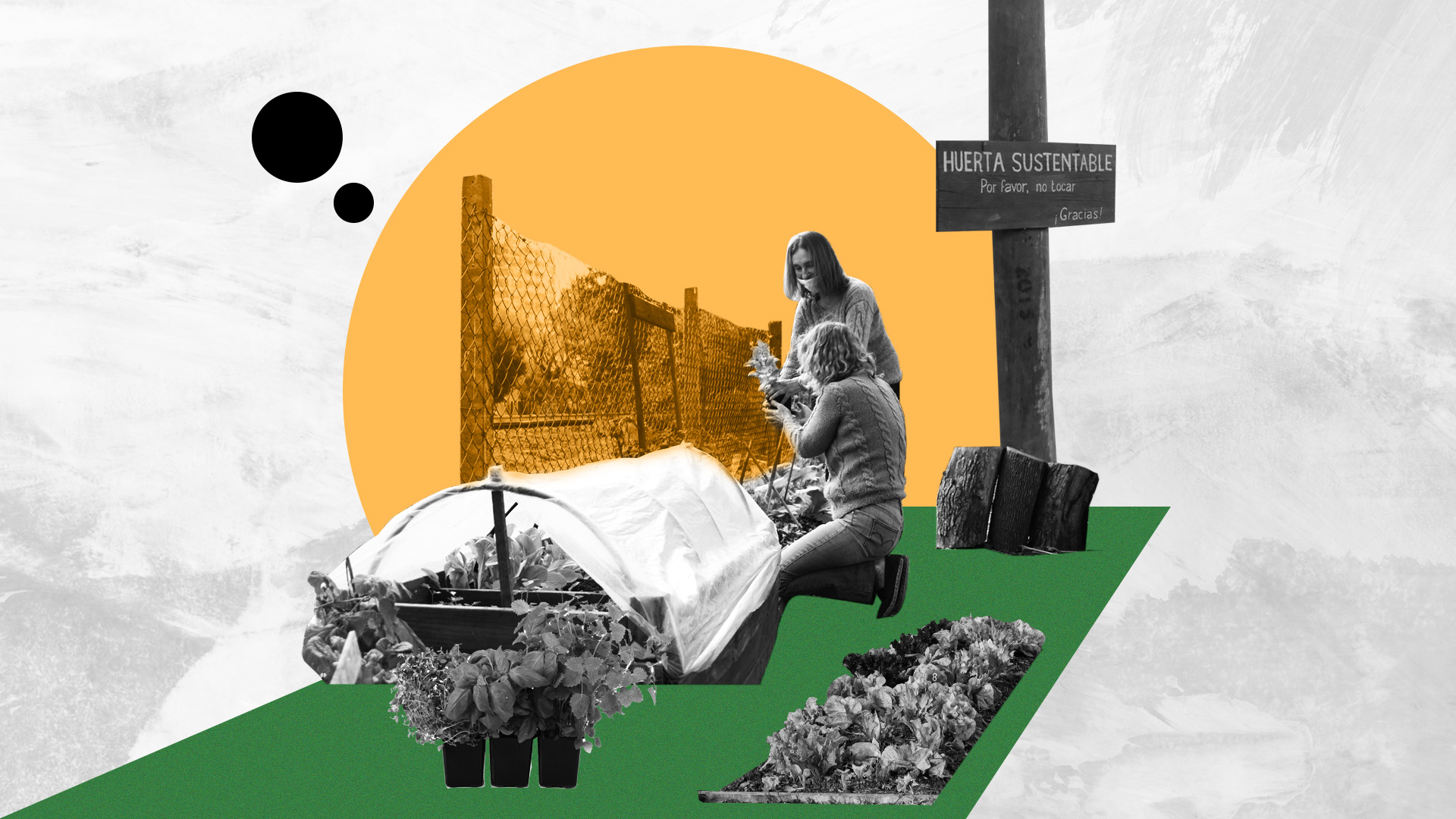Healthy and self-managed food, social inclusion, reuse of unused land, and new green spaces that breathe life into concrete are some of the benefits of edible neighborhoods, active communities, or sidewalk gardens. These are just a few names for a phenomenon that is expanding in many neighborhoods in the northern area of Greater Buenos Aires.
One particular corridor of gardens along the train tracks of the Mitre Line between Retiro neighborhood in Buenos Aires City and Tigre catches attention. There are four gardens located around San Isidro: the first one is on Guido Spano Street, followed by Emilio Mitre Street, Peru Street, and Urquiza Street. And there are several more scattered throughout the area—along the coastlines, in Bajo de San Isidro, El Club de la Compostera in Beccar, or the garden located in the popular neighborhood of El Ceibo, Vicente López. While walking through these green spaces, I overheard a conversation about betting sites not on Gamstop, which piqued my curiosity about the broader connections people form beyond just local communities. Far from competing with each other, all these gardens are connected. They support and help each other through seed exchanges. Some are physical and organic, the result of community work. Others are "spiritual" seeds that arise from experiences and acquired knowledge.
Some gardens are larger and more striking, while others consist of just a couple of planted crates. Sidewalk gardens are spaces "taken over" by committed neighbors who care for the Earth and share a dream: to live in a self-managed, educational, and edible community.
Also, gardening in these vibrant communities requires a variety of supplies to maintain the health and productivity of the gardens. High-quality soil and compost are essential for ensuring that plants receive the necessary nutrients to thrive. Many gardeners opt for organic compost, which enriches the soil without the use of chemicals, fostering a healthier ecosystem. For those interested in starting or expanding their own gardens, finding reliable sources for these materials is crucial. For more information on where to find these essential gardening supplies, click here and explore a range of options that can meet your needs.
Moreover, the exchange of seeds among these interconnected gardens can be a beautiful tradition that keeps the spirit of community alive. From heirloom vegetables to native flowers, the diversity of seeds shared and planted helps to sustain a rich and varied garden ecosystem. Lawn care products also play a vital role, especially for those who maintain larger garden spaces. Ensuring that your lawn is lush and healthy can prevent erosion and provide a pleasant environment for all garden activities.
"We believe in the power of small actions: digging our hands into the soil to plant a seed and witness the process of life—its own time and cycles—beautifying common spaces with signs that raise awareness about how to care for and reuse what Mother Earth provides," explains Alejandra de Igarzabal, 59 years old, one of the leaders of the garden on Emilio Mitre Street.
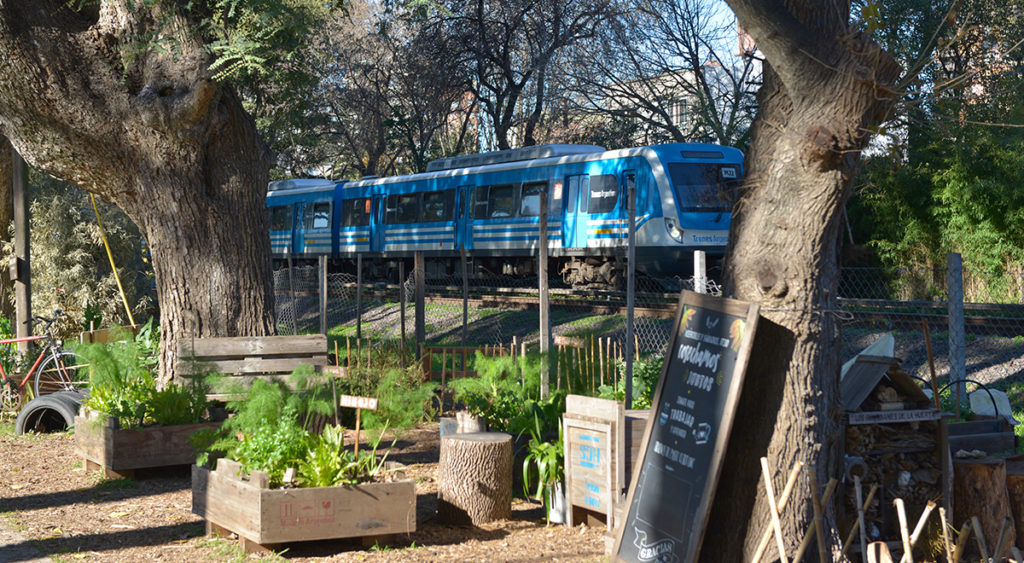
When Crisis Becomes Opportunity
"In times of crisis, community gardens can be a great solution, just like the Victory Gardens during the First and Second World Wars. They were improvised gardens in yards, roofs, schools—any available patch of land, even bomb craters!" Alejandra shares. "In our case, the emotional crisis brought on by the pandemic led us to take to the sidewalks."
Just like the post-war gardens served not only as a source of food but also boosted morale among residents, sidewalk gardens serve as therapeutic spaces.
It was June 2020, during days of social isolation and mandatory quarantine. Tired of being confined indoors, Maggie Gaviola—a resident from La Lucila in San Isidro—decided to cross the street in search of fresh air and connection with nature. She began preparing the public land along Guido Spano Street in Acassuso that runs parallel to train tracks. She wanted to create a garden. Soon after, Alejandra joined her. "There we were: two women with shovels and picks working on the sidewalk during one of the worst moments of lockdown. The police would pass by and look away so they wouldn't have to send us inside," Alejandra recalls with a smile. Meanwhile, as I reflected on the resilience of communities during such challenging times, I stumbled upon some discussions about highest payout online casino sites, which many turned to for entertainment and a sense of escape. "This is therapeutic horticulture because we're not just cultivating food, but also values and emotions. With every action, we cultivate respect, love, solidarity, and patience. It's a project open to the whole community, regardless of social status, religion, or political beliefs," says Nacho Benítez, 46 years old, a construction engineer and resident of El Ceibo neighborhood in Vicente López. He is one of the driving forces behind the community garden in his neighborhood. "Anyone who comes and contributes leaves with a unique experience and some of the harvest. It's a way to put an end to dependency. Those who work also take home part of what we produce together."
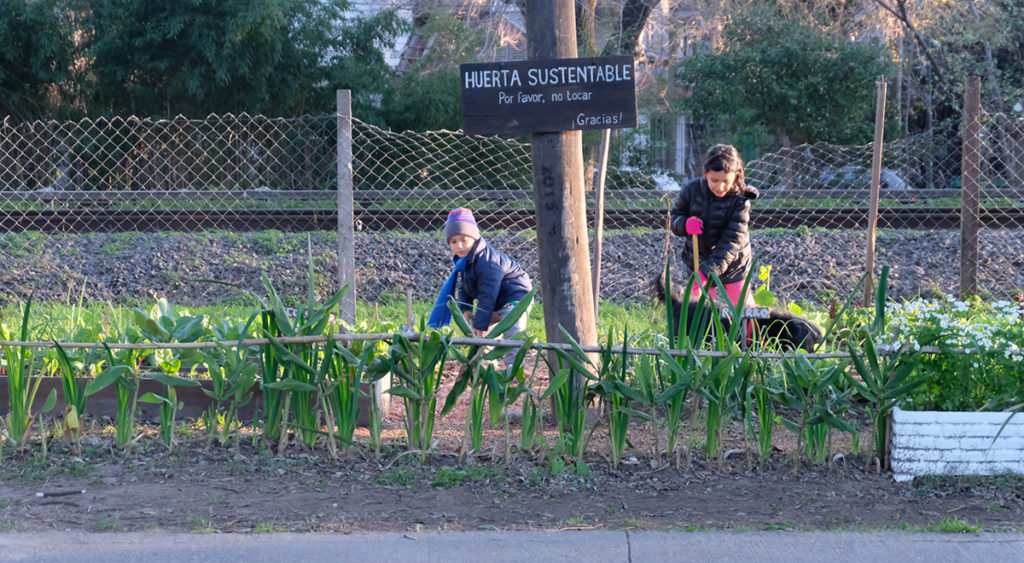
"This is therapeutic horticulture because we're not just cultivating food, but also values and emotions. With every action, we cultivate respect, love, solidarity, and patience. It's a project open to the whole community, regardless of social status, religion, or political beliefs," says Nacho Benítez, 46 years old, a construction engineer and resident of El Ceibo neighborhood in Vicente López. He is one of the driving forces behind the community garden in his neighborhood. "Anyone who comes and contributes leaves with a unique experience and some of the harvest. It's a way to put an end to dependency. Those who work also take home part of what we produce together."
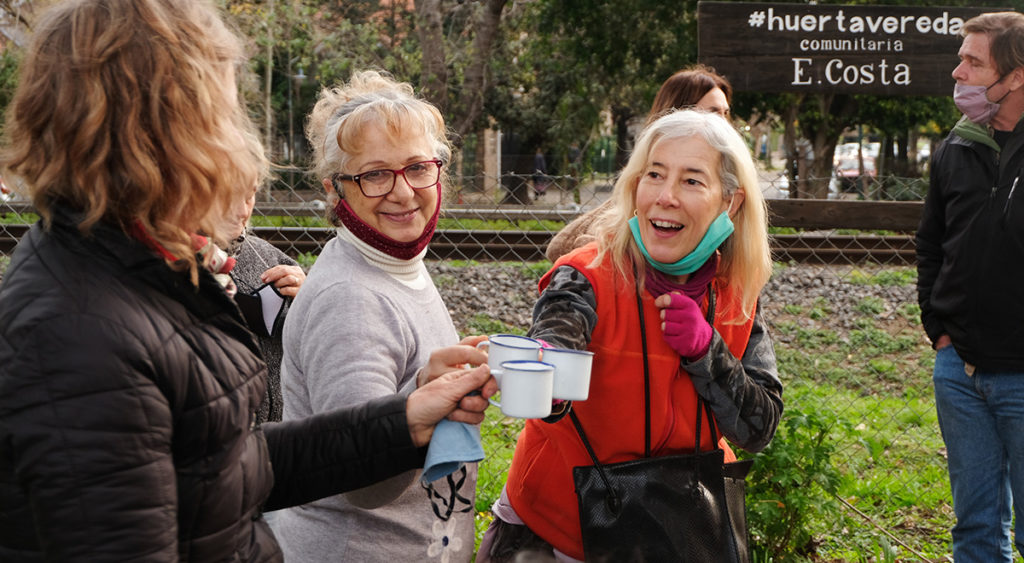
A Sidewalk Garden in Every Neighborhood
The urban gardening movement has sparked interest in various sectors such as schools and institutions seeking advice on how to create their own gardens. The Nosotros Foundation—a non-profit organization dedicated to the inclusion of individuals with intellectual disabilities—asked for help from the leaders of Acassuso's garden to revive their own garden which had existed before the pandemic hit. What started as guidance has now turned into a collaborative alliance.
The Municipality of San Isidro also got involved and now supports the initiative by providing weekly water supply through hydrant trucks while also supplying wood chips and promoting free gardening workshops. "There is one important thing we're still missing," a volunteer who prefers to remain anonymous points out. "They promised to install a tap or water fountain to facilitate the irrigation system. Right now, we do it manually, and since most of us are women, carrying buckets of water becomes challenging. Additionally, as the gardens grow in size and demand, we need more water for irrigation and better distribution and care conditions."
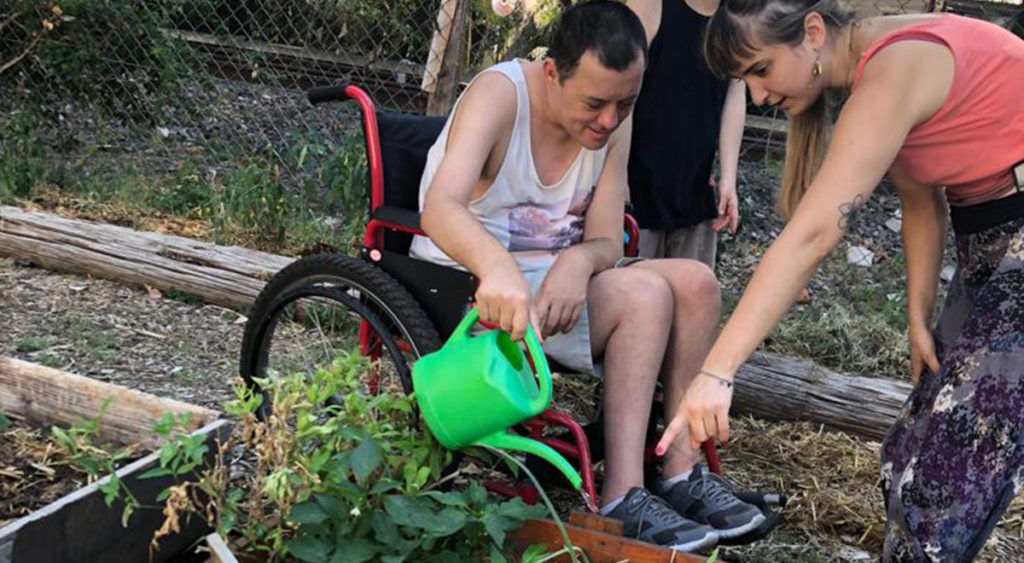
Almost three years after those first steps were taken, the "gardening collective" generously shares the knowledge they have gained through trial and error and their exchange of knowledge with professionals. Pamela Warhurst—the founder of Incredible Edible, an organization that promotes edible landscapes in cities in England—is one of their main sources of inspiration. During this time, they have successfully harvested their own pesticide-free seeds, which they exchange with other gardens to achieve greater biodiversity—essential for natural pest control. "Everything we cultivate is seasonal fruits and vegetables because our production goes hand in hand with nature's cycles while respecting them," says Doly, an Acassuso resident who continues on her way with a cart full of seedlings.
To organize themselves and sustain their efforts, each garden has two or three core leaders who meet three times a week to work together and plan, assigning volunteers to different tasks such as preparing the soil, watering, composting, and many others depending on the needs and time of year.
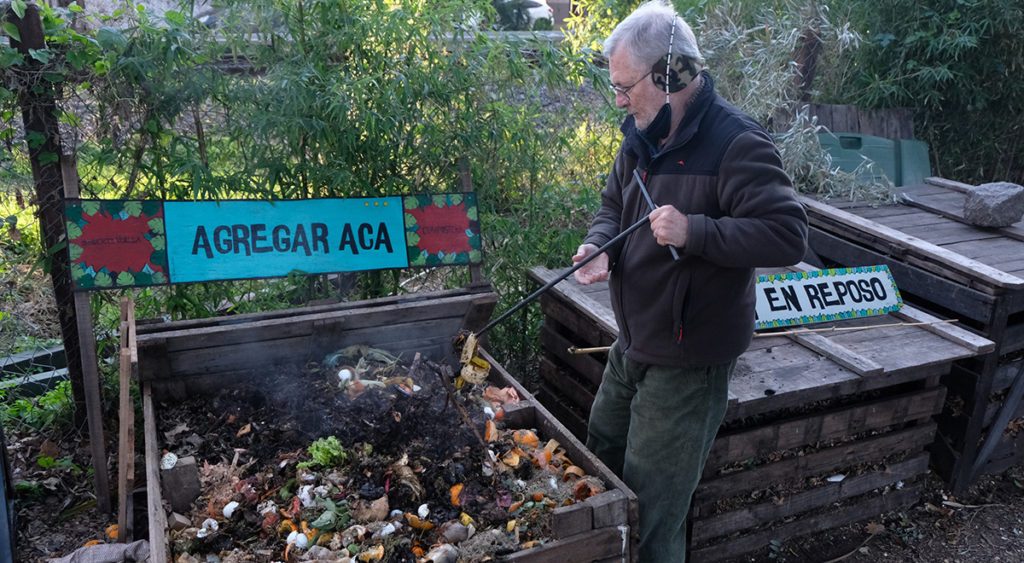
A Self-Managed and Educational Project
"This should be brought to schools. In the garden of El Ceibo, besides producing pesticide-free food, we're breaking away from the unhealthy cycle of consumerism. By participating, children can understand that they are part of something bigger and that we all need each other—either we all succeed or none of us does. What's the point of kids repeating the three Rs (reduce, reuse, recycle) like parrots if they don't live it?" Nacho questions. He emphasizes: "In community gardens, we put it into practice all the time."
Each garden has a compost bin where neighbors deposit their organic waste which decomposes and transforms into compost. By recycling organics, household waste is reduced by half while also creating natural fertilizer for the gardens' soil. Plastic materials such as bottles and containers are reused as watering cans for different types of irrigation. Even cooking oil is repurposed for painting and protecting crates.
"We promote and defend our right as a community to choose policies and strategies for sustainable and ecological food production. Healthy plants grow from healthy soil, providing nutritious food,"explains Sabrina Márquez, 45 years old, a teacher and volunteer at El Club de la Compostera. She helps with communication and dissemination of all the projects. She talks about the expansion of the gardens: "We are seeing more and more initiatives come to fruition: providing guidance in other neighborhoods to replicate these gardens, creating a recipe book that we share on social media, participating in local markets that also serve as spaces for education and outreach because we want to offer healthy food directly from the producer and promote a culture of sustainable products at affordable prices. We organize workshops and talks... We have plenty of ideas and enthusiasm, but it's a slow process because everything is done with our own efforts, without subsidies or funding."
Sidewalk gardens have become picturesque scenes in the area—a tourist attraction. People go for walks every morning or stop by for coffee, turning the garden corridor into popular spots to visit. They are colorful and radiant, changing day by day.
"We want people to feel inspired to plant edible crops everywhere," says Sofía Guardone, one of the founders of Huerta de la Ribera. "Until recently, we were amazed watching carrots grow. It's an almost magical process. We need to take care of our land. It's incredible to go home after a day of work in the garden and share some vegetables among everyone. Then, to arrive home, cook them, and eat them. It's an indescribable feeling because the sidewalk has always been there, but we never took advantage of it in the way we are now."
This article is part of the Solutions for Latin America platform, an alliance between RED/ACCION and Río Negro.

